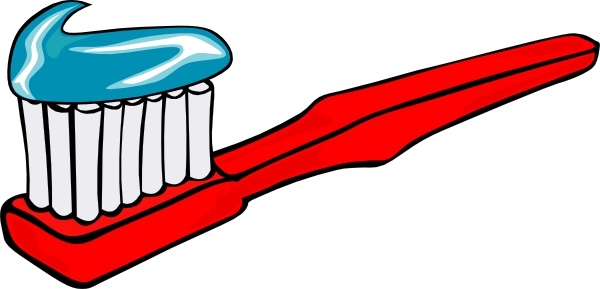Sometimes we’re doing our best to keep our teeth clean, but cavities still come up. While, some people are just extra prone to dental decay, stepping-up in the cavity prevention department can help even the most cavity prone patients. Here’s a quick cavity control checklist to make sure you’re doing everything possible to keep those smiles healthy:
Revamp Your Routine

√ Item#1: More than the Minimum
Of course dental guidelines (and common knowledge) tell us to brush for two minutes at least twice a day and floss at least once a day. But in this case the “at least” is key! If brushing two times isn’t cutting it, some patients may benefit from increasing the frequency of their hygiene routine. Try brushing after every meal as well as each morning and night and add in more frequent flossing as well.
√ Item #2: Perfect the Technique
Brushing everywhere in the mouth, and brushing for long enough are key to removing the bacteria and plaque that cause cavities. The most commonly missed areas of the mouth are the hard-to-reach back molars. Adjusting the angle of the toothbrush or the openness of the mouth may make getting the back molars easier. Remember, the best brushers don’t scrub harder; the best brushers just brush for long enough and make sure they get every inch of tooth.
Enough Internal Fluoride

Fluoride is a naturally occurring mineral which has been proven to strengthen enamel and prevent cavities. Fluoride works on teeth in two ways; First, when swallowed it works systemically from inside your body to strengthen growing adult teeth. Secondly, when applied topically fluoride bonds with the minerals in your teeth to create a harder, more cavity resistant tooth.
√ #3: Supplement your Supply
In most American Cities fluoride is added directly to the water, which means effortless access to fluoride both systemically and topically whenever you take a drink. However, several Utah cities don’t fluoridate the water, in which case your dentist or pediatrician can prescribe a fluoride supplement which can be taken like a vitamin.
It’s important to note that too much internal fluoride can result in “fluorosis” or permanent discoloration of incoming adult teeth. To avoid this condition, toothpaste should not be swallowed and those who live with a fluoridated water system should not take a fluoride supplement. Young children should use a mild child’s toothpaste until they’re capable of spitting out all the toothpaste used for brushing.
Total Topical Fluoride

√ #4: Toothpaste that Works
The most common way most of us get topical fluoride is from toothpaste. It’s important to use a dentist recommended toothpaste with fluoride listed in the active ingredients. Many “holistic” or so-called “natural” cleaners claim to provide great results, but lack the ability to remineralize teeth and prevent cavities because they don’t contain fluoride.
Additionally, for patients with greater cavity risk, your dentist may prescribe an extra-strength toothpaste like Clinpro or Prevident. To get the best benefits from a prescription toothpaste, use it before bed, brush normally and then spit but don’t rinse. That way the fluoride will sit on the surface of the teeth overnight, giving it more time to work on your teeth.
√ #5: Less isn’t More
 Another way to ensure enough topical fluoride exposure is by having a professional fluoride varnish at each dental checkup. Some insurance plans may only pay for fluoride applications once a year, but the dentists at South Valley Pediatric Dentistry (and current best practice standards) recommend fluoride varnish applications at each semiannual cleaning for better protection from tooth decay (or more often, if cavities exist or the patient is considered high risk for developing cavities). If your insurance won’t cover fluoride each time, paying for fluoride out of pocket could save you money in the long run by preventing the larger cost of fixing cavities.
Another way to ensure enough topical fluoride exposure is by having a professional fluoride varnish at each dental checkup. Some insurance plans may only pay for fluoride applications once a year, but the dentists at South Valley Pediatric Dentistry (and current best practice standards) recommend fluoride varnish applications at each semiannual cleaning for better protection from tooth decay (or more often, if cavities exist or the patient is considered high risk for developing cavities). If your insurance won’t cover fluoride each time, paying for fluoride out of pocket could save you money in the long run by preventing the larger cost of fixing cavities.
FULL CAVITY CONTROL CHECKLIST
So, if you or your child has frequent cavities, you may be able to up your prevention game by following this list.
√ Item#1: More than the Minimum – Floss more often, and brush after every meal.
√ Item #2: Perfect the Technique – Brush every area of the mouth thoroughly.
√ #3: Supplement your Supply – Take a fluoride supplement if needed.
√ #4: Toothpaste that Works – Use a dentist recommended toothpaste with fluoride.
√ #5: Less isn’t More – Have a professional fluoride varnish at least twice a year.



Flossing Facts and Fiction
[…] To find out what else you could do to protect your oral health check out our Cavity Control Checklist. […]